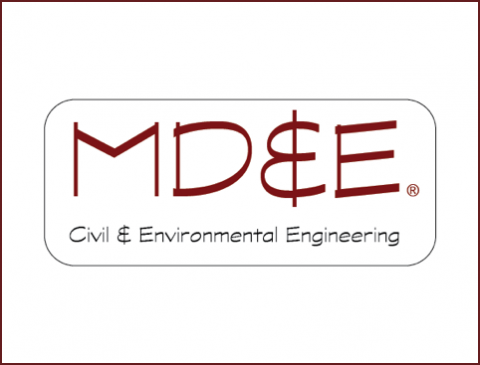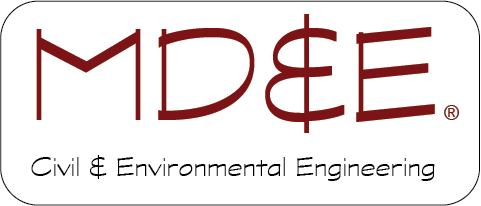
MD&E personnel are formally trained in geology, hydrogeology, and environmental engineering, with emphasis on environmental fluid mechanics. Dr. Mayotte is also extensively experienced with analytical and numerical modeling of fluid flow in both porous media and open channels. Throughout his 27 year career as a hydrogeologist and environmental engineer, he has dealt with dozens of projects that require interpretation and quantitative evaluation of groundwater/surface water interactions, including the affects of outlet control devices on surface drainage systems. Dr. Mayotte’s background also includes hydrologic and hydraulic modeling and evaluations. Nearly every project that MD&E personnel work on requires knowledge and interpretation of conditions affecting the movement of water within watersheds, including surface run-off, infiltration, groundwater (baseflow) and concentrated surface drainage. This includes understanding the affects of natural and man-made structures on the flow of water in rivers, streams and flow-through lakes.
Recently, MD&E was contracted to complete an evaluation of the construction and operation of a gravity-earth fill dam used to control water levels on a highly populated flow-thorough lake system in the Upper Midwest. Normal pool elevation is approximately 4 feet below the crest of the dam. The crest length across the lake system outlet is 420 feet. The crest width between the upstream and downstream embankments of the dam is 15 feet. The upstream embankment slope is 40%. The downstream embankment slope varies from 30% to 50%. Both embankments are protected with rip-rap. The overall height of the dam structure is approximately 16 feet.
Flow through the dam is conveyed through a 21.5-feet wide concrete spillway with a sill (bottom) elevation 7 feet below normal pool. The spillway opening is tapered both up- and down-stream with concrete wing walls. A concrete apron extends from the sill to a rip-rap lined tail-water channel downstream of the spillway.
To ensure a constant water level on the lake system over a broad range of precipitation conditions, flow through the outlet is controlled to consistently match the rate of natural inflow. Outflow through the dam spillway is controlled by two 10-feet wide and 7-feet tall mechanized split-leaf gates separated by a concrete pier. Both gates consist of two 3.9-feet long leaves that are longitudinally off-set to permit the upper leaves to be raised and lowered relative to the lower leaves and for both leaves to be raised simultaneously fully-open the spillway.
